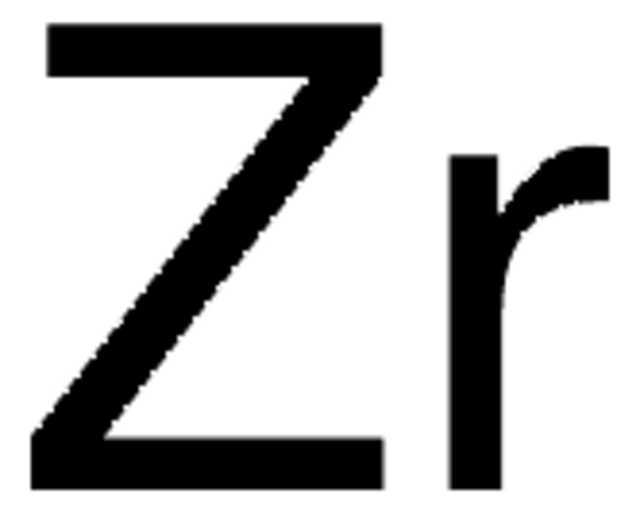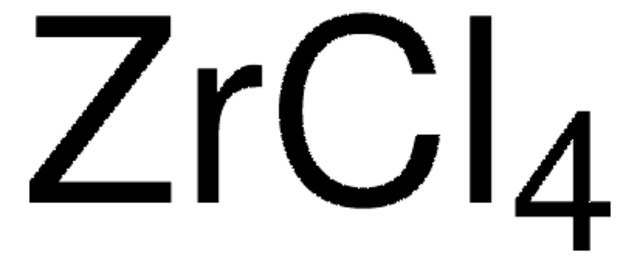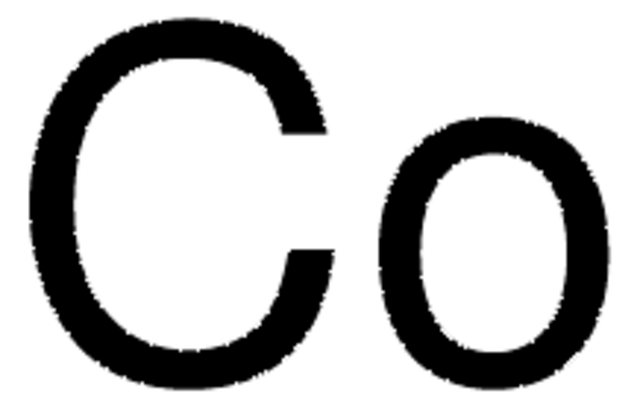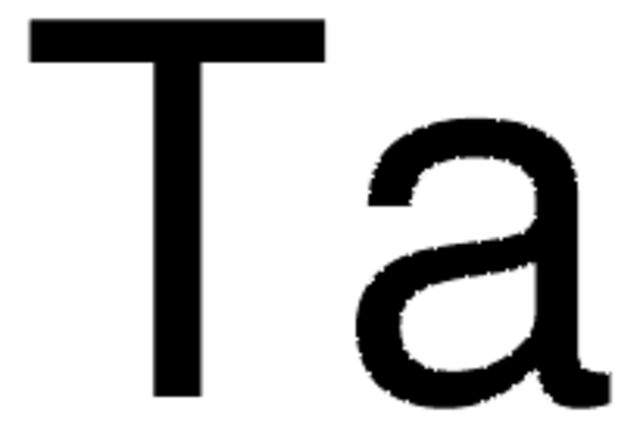419141
Zirconium
foil, thickness 0.1 mm, 99.98% trace metals basis
Synonyme(s) :
Zirconium element
About This Item
Produits recommandés
Niveau de qualité
Pureté
99.98% trace metals basis
Forme
foil
Résistivité
40 μΩ-cm, 20°C
Épaisseur
0.1 mm
Point d'ébullition
4377 °C (lit.)
Pf
1852 °C (lit.)
Densité
6.5 g/mL at 25 °C (lit.)
Chaîne SMILES
[Zr]
InChI
1S/Zr
Clé InChI
QCWXUUIWCKQGHC-UHFFFAOYSA-N
Vous recherchez des produits similaires ? Visite Guide de comparaison des produits
Quantité
Code de la classe de stockage
11 - Combustible Solids
Classe de danger pour l'eau (WGK)
nwg
Point d'éclair (°F)
Not applicable
Point d'éclair (°C)
Not applicable
Équipement de protection individuelle
Eyeshields, Faceshields, Gloves, type P3 (EN 143) respirator cartridges
Faites votre choix parmi les versions les plus récentes :
Déjà en possession de ce produit ?
Retrouvez la documentation relative aux produits que vous avez récemment achetés dans la Bibliothèque de documents.
Les clients ont également consulté
Articles
Can there be an effective strategy for finding breakthrough materials, since they are, by definition, unpredictable? One answer is found in Combinatorial Materials Science techniques, which represent a powerful approach to identifying new and unexpected materials.
Biomedical implants are essentially foreign substances within the human body that must survive many years’ exposure to demanding mechanical and physiological conditions. Despite these challenges, metal implants have been widely used to substitute for or rebuild hard tissues such as bones and teeth.
Notre équipe de scientifiques dispose d'une expérience dans tous les secteurs de la recherche, notamment en sciences de la vie, science des matériaux, synthèse chimique, chromatographie, analyse et dans de nombreux autres domaines..
Contacter notre Service technique








